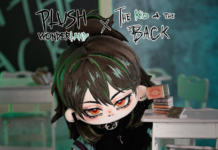Streetwear culture has a history that is just as cool and interesting as it looks. From the early 1980s to the present it is a fashion statement for the world.

Streetwear culture is more than just a fashion movement—it’s a cultural revolution that has reshaped how people engage with style, identity, and community. Emerging from the underground scenes of skateboarding, hip-hop, and punk, streetwear has evolved into a multi-billion-dollar global industry that blurs the lines between casualwear, luxury fashion, and cultural expression. Its journey reflects a broader narrative of how youth-led subcultures influence and eventually transform mainstream culture.
At its core, streetwear has always been about authenticity, creativity, and rebellion. It represents a rejection of conventional fashion norms, offering a platform for self-expression that resonates with diverse communities worldwide. What began with hand-printed T-shirts and skate sneakers in the 1970s has grown into a cultural powerhouse, influencing not only fashion but also music, art, and social movements.
The rise of digital platforms and social media has accelerated streetwear’s global spread, allowing ideas and trends to circulate across continents instantly. Today, streetwear is not just confined to the streets—it’s present on high-fashion runways, celebrity wardrobes, and virtual spaces. It is a symbol of cultural hybridity, where local subcultures intertwine with global fashion dynamics.
This blog explores the origins, defining characteristics, and future trajectory of streetwear culture, examining how it transformed from a niche subculture into a dominant cultural force. By understanding its evolution, we can appreciate how streetwear reflects broader societal changes and the ever-shifting relationship between culture and commerce.
Origins of Streetwear: The Birth of a Movement
Streetwear culture was born from the fusion of multiple subcultures that rejected mainstream values and sought alternative forms of self-expression. During the 1970s and 1980s, youth movements across the United States, particularly on the East and West Coasts, began using clothing to communicate their identities, beliefs, and affiliations.
Skateboarding Culture: In Southern California, skateboarding emerged as a defining influence on streetwear’s aesthetic. Skateboarders needed durable, comfortable clothing that could withstand the wear and tear of their sport. Loose-fitting jeans, oversized T-shirts, and sneakers became essential. The DIY spirit of skateboarding extended to fashion—many skateboarders customized their gear with unique graphics and personal touches. This laid the foundation for the independent, artist-driven ethos of early streetwear brands.
Hip-Hop and Urban Fashion: On the East Coast, hip-hop culture was developing as a powerful social and musical movement. Clothing became an essential marker of identity and success within hip-hop communities. Baggy pants, athletic wear, and statement accessories reflected the culture’s emphasis on self-expression and defiance against social inequality. The link between music and fashion became a central tenet of streetwear, as artists used their style to tell stories and assert their individuality.
Punk and DIY Ethics: Punk culture contributed another layer to streetwear’s evolution. Punk fashion, with its torn clothing, safety pins, and bold graphics, symbolized resistance to mainstream consumerism. This anti-establishment ethos resonated with streetwear’s early adopters, fostering a culture of customization and limited production.
Together, these subcultures laid the foundation for what would become streetwear: a blend of functionality, rebellion, and artistic expression. The DIY mentality—where individuals created and sold their own designs—became a hallmark of the movement, reinforcing a sense of authenticity and independence.
The 1990s: Streetwear Gains Momentum
The 1990s marked a turning point for streetwear, as the movement expanded beyond its local roots to become a broader cultural phenomenon. This decade witnessed the rise of independent streetwear brands, the emergence of sneaker culture, and the beginning of collaborations that would redefine fashion.
The Rise of Sneaker Culture: Sneakers became an iconic symbol of streetwear during the 1990s. Limited-edition releases and collaborations between sneaker companies and cultural icons elevated sneakers from athletic gear to coveted fashion statements. The concept of ‘sneakerheads’ emerged—individuals who collected and traded rare sneakers. This culture of exclusivity and scarcity became a defining feature of streetwear.
Streetwear as a Cultural Marker: Streetwear became more than just clothing; it became a cultural marker that communicated identity and belonging. Wearing specific brands or limited-edition pieces signified membership in a particular subculture. The 1990s also saw the rise of graphic T-shirts that conveyed political messages, cultural references, and artistic designs—transforming everyday clothing into a medium for storytelling.
Early Collaborations: This decade also introduced the idea of collaborations between streetwear brands and mainstream companies. These partnerships blended underground credibility with mass-market reach, making streetwear accessible to a wider audience while preserving its countercultural roots.
The 2000s: The Rise of Global Streetwear Culture
In the 2000s, streetwear transcended its regional origins to become a global cultural force. The internet played a critical role in expanding streetwear’s reach, fostering online communities where enthusiasts shared trends, collections, and ideas.
Digital Connectivity: The rise of online forums, blogs, and social media platforms allowed streetwear enthusiasts to connect across geographic boundaries. This digital communication accelerated the spread of trends and facilitated global collaboration. Limited-edition releases, or ‘drops,’ became highly anticipated events, drawing attention from fans worldwide.
The Streetwear-Luxury Crossover: During this era, high-fashion brands began recognizing the cultural influence of streetwear. Collaborations between streetwear labels and luxury designers blurred the boundaries between casual and couture. This fusion elevated streetwear to new heights, redefining perceptions of luxury and exclusivity.
The ‘Drop’ Model: Streetwear brands pioneered the ‘drop’ model, where limited products are released in small quantities at unpredictable times. This strategy created a sense of urgency and desirability, turning product launches into cultural spectacles. The exclusivity and scarcity inherent in this model amplified streetwear’s allure.
The 2010s: Streetwear Meets High Fashion
By the 2010s, the once-underground streetwear movement had fully integrated with the world of luxury fashion. No longer just a symbol of counterculture, streetwear became a driving force behind some of the most influential fashion trends. This period marked a cultural shift where casual styles like hoodies, sneakers, and graphic tees became not only accepted but celebrated on high-fashion runways. Beyond celebrity endorsements and the redefinition of status, several additional factors played a crucial role in blending streetwear with luxury.
Streetwear Designers Entering Luxury Fashion Houses: A defining moment in the merger of streetwear and high fashion was the appointment of streetwear designers to lead prestigious luxury brands. Traditionally, luxury fashion was dominated by classically trained designers who adhered to rigid standards of couture craftsmanship. However, the arrival of streetwear innovators disrupted these conventions.
Streetwear designers brought fresh perspectives influenced by music, youth culture, and urban aesthetics. This shift not only changed the visual language of luxury fashion but also expanded its audience. High-fashion houses recognized that streetwear’s cultural relevance and mass appeal could revitalize their brands and attract younger, more diverse consumers.
By blending streetwear’s edgy, accessible style with luxury’s premium craftsmanship, these designers created hybrid aesthetics that redefined what luxury fashion could be. This crossover blurred the lines between casualwear and high-end fashion while maintaining the exclusivity and desirability associated with both worlds.
Fashion Weeks and Runway Representation: Another pivotal moment in the convergence of streetwear and high fashion was the inclusion of streetwear aesthetics in major fashion weeks. Traditionally, fashion weeks showcased formal, avant-garde designs meant for elite audiences. However, as streetwear gained mainstream recognition, it became a regular feature on the most prestigious runways worldwide.
Designers began incorporating signature streetwear pieces—such as oversized silhouettes, sneakers, and technical fabrics—into their collections. This shift not only validated streetwear within the luxury fashion ecosystem but also reflected changing consumer preferences for comfort and versatility.
The presence of streetwear at major fashion weeks helped dismantle long-standing barriers between casual and luxury fashion. Fashion critics, influencers, and buyers started treating streetwear as a legitimate artistic expression rather than a passing trend. This increased visibility brought streetwear to an even broader audience and cemented its influence on the global fashion landscape.
Limited Edition Capsules and High-Fashion Drops: Luxury brands adopted the streetwear-inspired ‘drop’ model to capitalize on the excitement surrounding exclusive, time-sensitive releases. Rather than following the traditional fashion calendar of seasonal collections, brands began releasing limited-edition ‘capsule collections’ that created a sense of urgency and exclusivity.
These collaborations blurred the line between streetwear’s grassroots origins and luxury’s craftsmanship. The scarcity of these releases heightened consumer demand, driving fans to wait in line for hours or compete online to secure coveted pieces. This strategy transformed product launches into cultural events, where the social cachet of owning rare, limited pieces became a new form of status.
The drop model also allowed luxury brands to remain culturally relevant in an era of rapid fashion cycles. By releasing smaller, more frequent collections, they could respond to cultural shifts and social media trends in real-time. This dynamic approach aligned luxury fashion with the fast-moving world of streetwear while maintaining a sense of exclusivity.
Cross-Cultural Collaborations and Global Influence: As streetwear expanded beyond its American origins, luxury brands increasingly engaged with global streetwear cultures. Designers from Asia, Europe, and other regions brought unique interpretations to the fusion of streetwear and high fashion, reflecting local identities while maintaining global appeal.
In regions like Japan and South Korea, streetwear evolved as a distinctive cultural movement with its own design language. Luxury brands recognized the creative potential of these markets and began collaborating with regional streetwear designers to produce exclusive collections. This cross-cultural exchange not only diversified streetwear aesthetics but also reinforced its position as a global phenomenon.
These collaborations often merged traditional craftsmanship with modern streetwear aesthetics, resulting in collections that celebrated both innovation and heritage. By engaging with diverse cultural narratives, luxury brands extended their influence while acknowledging the grassroots origins of streetwear.
Moreover, the rise of digital platforms enabled global audiences to participate in these cultural crossovers. Social media amplified the impact of collaborations, allowing fans from around the world to engage with and influence the evolution of streetwear-luxury hybrids.
The marriage of streetwear and luxury fashion continues to redefine the industry’s boundaries. As streetwear designers enter the luxury space, and as fashion weeks, drop models and global collaborations evolve, the line between these two worlds becomes increasingly blurred. This dynamic fusion reflects broader cultural shifts toward accessibility, identity, and innovation—ensuring that the influence of streetwear on high fashion will endure for years to come.
Key Elements of Streetwear Culture
- Exclusivity and Scarcity:Limited releases fuel consumer demand and maintain the culture’s sense of rarity and value. Streetwear’s exclusivity fosters a sense of belonging and status among its followers.
- Collaboration Culture:Collaborations between streetwear brands and other industries—art, music, sports—drive innovation and cultural relevance. These partnerships blur creative boundaries and keep the culture dynamic.
- Community and Identity:Streetwear is deeply tied to community identity. It provides a way for individuals to align themselves with specific cultural narratives while expressing their individuality.
- DIY Ethos: The DIY spirit remains a core value of streetwear. Many brands started as small, independent ventures emphasizing artistic freedom and cultural authenticity.
The Future of Streetwear: Where is it Heading?
As we look toward the future, streetwear is evolving to address new cultural and technological realities.
- Sustainability: Eco-conscious practices are shaping the next generation of streetwear. Consumers are demanding more ethical production and sustainable materials.
- Tech Integration:Advances in technology, such as NFTs and digital fashion, are transforming how streetwear is created and consumed.
- Globalization: Streetwear is no longer confined to Western subcultures. Global influences from Asia, Africa, and South America are reshaping the movement.
- Gender Fluidity: Gender-neutral designs and inclusive branding reflect broader cultural shifts toward gender fluidity and self-expression.
The Lasting Impact of Streetwear Culture
Streetwear’s evolution from an underground subculture to a global phenomenon reflects the power of youth-led movements to shape mainstream culture. Its enduring appeal lies in its ability to blend creativity, identity, and exclusivity. As it continues to evolve, streetwear remains a powerful symbol of cultural innovation—an ever-changing expression of the communities that shape it. Through sustainability, digital innovation, or cultural fusion the future of streetwear promises to remain as dynamic and influential as its past.


















